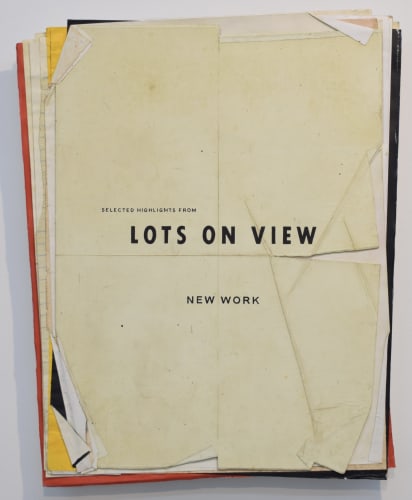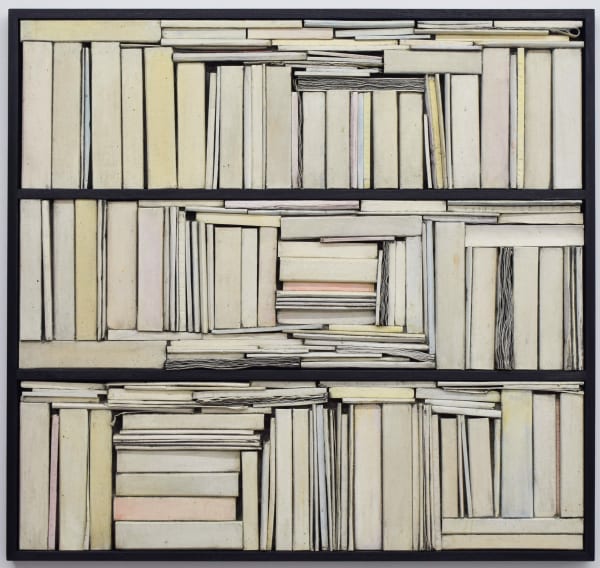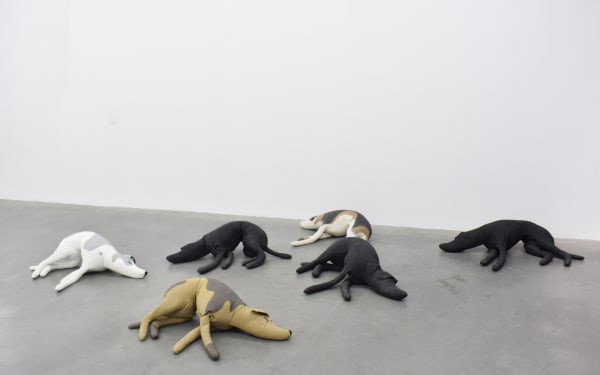Everything else: Ryan Brown
Brown's artwork, with their multidimensional approach and their ability to provoke emotional responses, offer a captivating journey into the layers of reality that lie beyond the obvious. "Everything Else" is not just a paintings and sculptures' exhibition, but a portal to a world where the boundaries between the tangible and the abstract blur, and where emotions become the currency of exchange. It is a reminder that, ultimately, art is a shared experience, shaped by both the artist and the viewer, and at the intersection of those two forces lies its true power.
Ana Lucía Arbeláez Z
Originally from Pennsylvania and born in 1977, Brown opens up a world where he challenges the conventions of contemporary art with an approach that oscillates between the hyperrealistic and the abstract, the figurative and the minimalist.
At the heart of the exhibition are The modern library, Brown's enigmatic "libraries," where books, stripped of their original context, become abstract vehicles. Covered by layers of paint, these volumes transform into silent witnesses of an unknown narrative, challenging the viewer to decipher their hidden content, exploring the depths concealed behind each layer of pigment.
On the other hand, the collage paintings made with multiple layers of overlapping paper reinforce the sensation of the enigmatic. The viewer is confronted with a wealth of information they cannot access. They will never know what those pages say or what lies behind the blocks of color and geometric figures. Furthermore, the titles of the works, extracted from encyclopedias and seemingly unrelated to the represented content, contribute to the sense of confusion and information concealment. What hides behind all those layers? The paint, graphite, ink, and papers are not mere plastic resources but the tools used by the artist to block "literal" access to the works.
So how do we connect with them? Should we look for aspects of the artist's life with which we identify to make a proper reading? Ryan rejects the inclusion of biographical elements in his art. His goal is to challenge the entrenched notion that art can only arise from cultural identity (historically associated with white men). By refraining from reflecting his own origins in his works, Brown seeks to universalize them, allowing anyone to identify with them and feel part of their reading.
This lack of information disorients the viewer, who is forced to connect with the art through emotions and energy. Furthermore, art can reflect the transience of memory and the inexorable passage of time. In this way, we understand the importance of Ryan's decision to "age" his works. By simulating the passage of time, he shows us how memories fade and shift into the background, causing artistic representations to distort or fragment, thus reflecting the imperfect nature of human memory.
Brown has automated, in some cases, his creative process by using molds for the elaboration of the libraries. This repetitive gesturality allows him, on the one hand, to reach an almost meditative state approaching the performance he previously resorted to. This repetition is a mantra for the artist; it is an opportunity to reconnect with oneself. Likewise, it allows him to free himself from the frenzy of our times and the need to constantly reinvent himself. Far from being an "easy way out," it is a questioning of the demands of the art market on artists.
In the work "Let sleeping dogs lie, Untitled until given name", the dogs (soft sculptures filled with sand) add an additional layer of emotional depth to the exhibition, evoking feelings of abandonment and serenity in equal measure. These creatures, inspired by stray dogs, challenge the viewer by obstructing their path, but at the same time convey a sense of undisturbed harmony. Strategically placed in the center of the exhibition space, the dogs challenge the viewer by blocking their way. However, they remain undisturbed, unconcerned about the discomfort they may cause.
For Brown, color is a profound exploration of perception and creative potential. The artist deliberately uses color to delineate space, play with geometric shapes, and planes of color in his works. His color palette, although recurrent, is carefully selected to convey emotions, create visual balance, and highlight the geometric structure of the composition. In his works, we observe a progressive shift in colors from intense tones to softer tones that evoke a study similar to Malevich's "white on white". The choice of color significantly influences the viewer's experience when interacting with the work.
Brown's works, with their multidimensional approach and ability to evoke emotional responses, offer a captivating journey into the layers of reality that lie beyond the obvious. "Everything Else" is not just an exhibition of paintings and sculptures, but a portal to a world where the boundaries between the tangible and the abstract blur, and where emotions become the currency of exchange. It is a reminder that, ultimately, art is a shared experience, shaped by both the artist and the viewer, and at the intersection of these two forces lies its true power.
Ana Lucía Arbeláez Z.
-
 Ryan Brown, Surrealist form, 2024
Ryan Brown, Surrealist form, 2024 -
 Ryan Brown, The modern library I, 2024
Ryan Brown, The modern library I, 2024 -
 Ryan Brown, The modern library II, 2024
Ryan Brown, The modern library II, 2024 -
 Ryan Brown, The modern library III, 2024
Ryan Brown, The modern library III, 2024 -
 Ryan Brown, Untitled until given name, 2022
Ryan Brown, Untitled until given name, 2022 -
 Ryan Brown, Untitled until given name IV, 2024
Ryan Brown, Untitled until given name IV, 2024 -
 Ryan Brown, Letter from Barcelona, 2024
Ryan Brown, Letter from Barcelona, 2024 -
 Ryan Brown, New people, old people, 2024
Ryan Brown, New people, old people, 2024 -
 Ryan Brown, Paper reader, 2024
Ryan Brown, Paper reader, 2024 -
 Ryan Brown, Reclining figure, 2024
Ryan Brown, Reclining figure, 2024












